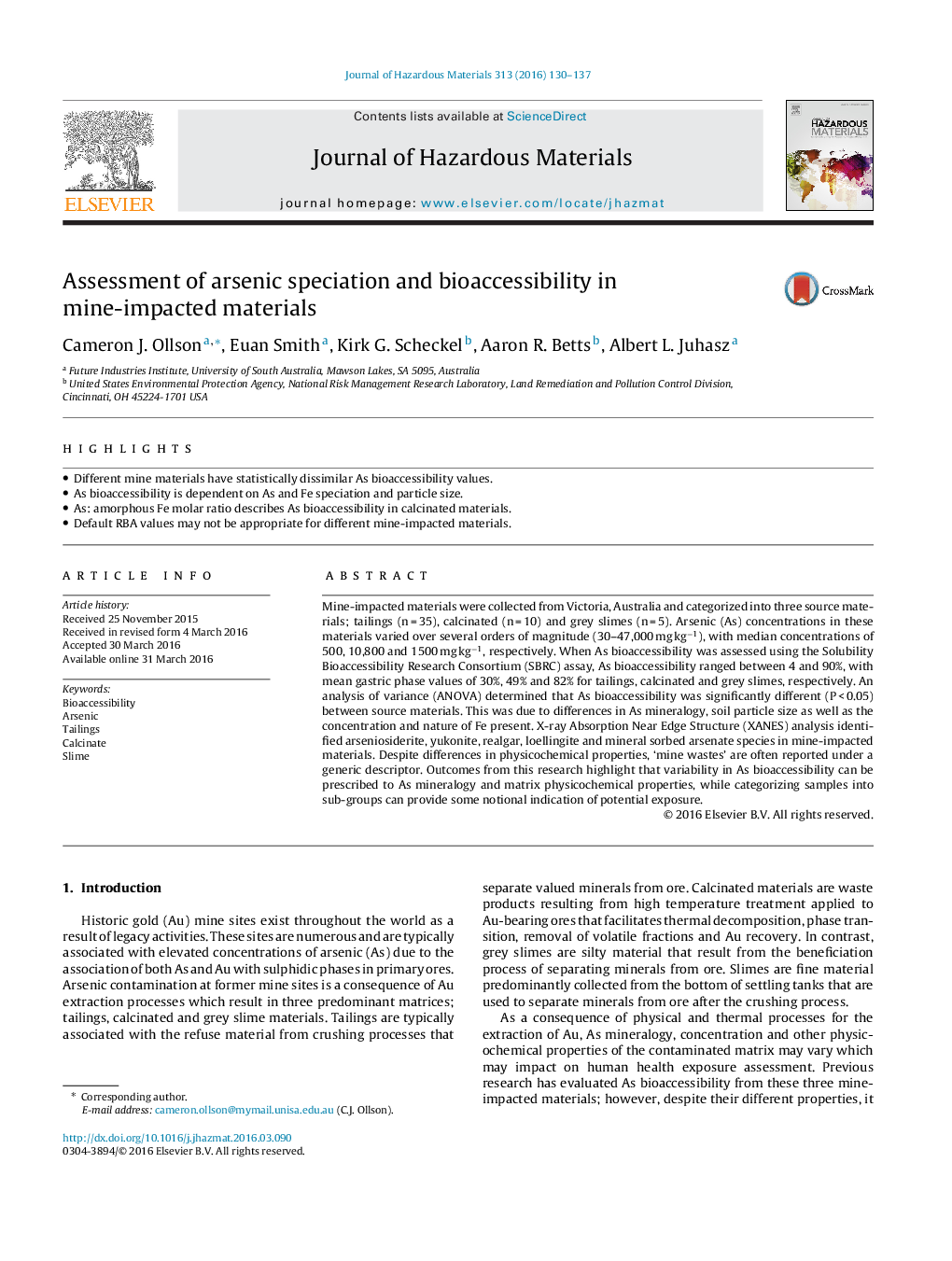| Article ID | Journal | Published Year | Pages | File Type |
|---|---|---|---|---|
| 575254 | Journal of Hazardous Materials | 2016 | 8 Pages |
Abstract
Mine-impacted materials were collected from Victoria, Australia and categorized into three source materials; tailings (n = 35), calcinated (n = 10) and grey slimes (n = 5). Arsenic (As) concentrations in these materials varied over several orders of magnitude (30-47,000 mg kgâ1), with median concentrations of 500, 10,800 and 1500 mg kgâ1, respectively. When As bioaccessibility was assessed using the Solubility Bioaccessibility Research Consortium (SBRC) assay, As bioaccessibility ranged between 4 and 90%, with mean gastric phase values of 30%, 49% and 82% for tailings, calcinated and grey slimes, respectively. An analysis of variance (ANOVA) determined that As bioaccessibility was significantly different (P < 0.05) between source materials. This was due to differences in As mineralogy, soil particle size as well as the concentration and nature of Fe present. X-ray Absorption Near Edge Structure (XANES) analysis identified arseniosiderite, yukonite, realgar, loellingite and mineral sorbed arsenate species in mine-impacted materials. Despite differences in physicochemical properties, 'mine wastes' are often reported under a generic descriptor. Outcomes from this research highlight that variability in As bioaccessibility can be prescribed to As mineralogy and matrix physicochemical properties, while categorizing samples into sub-groups can provide some notional indication of potential exposure.
Keywords
Related Topics
Physical Sciences and Engineering
Chemical Engineering
Chemical Health and Safety
Authors
Cameron J. Ollson, Euan Smith, Kirk G. Scheckel, Aaron R. Betts, Albert L. Juhasz,
